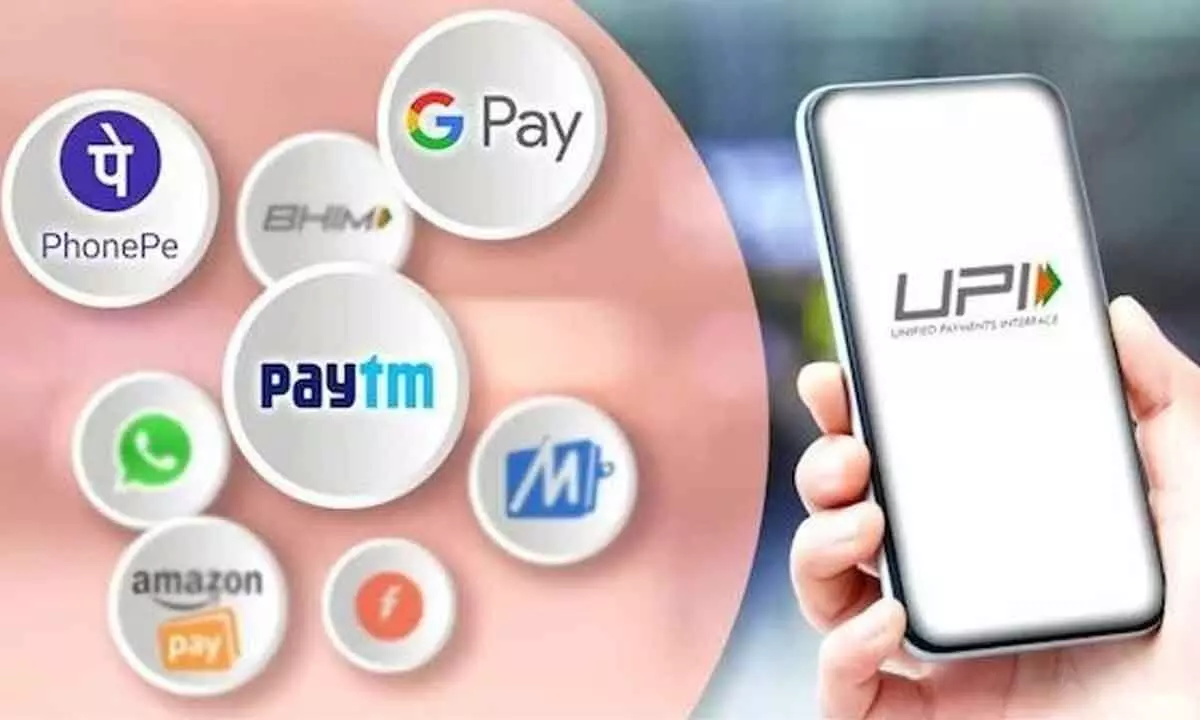The UPI mode will continue to dominate payments in India
The value of UPI transactions has been exhibiting a parallel upward trajectory
image for illustrative purpose

The transaction value increased from Rs 8.3 trillion in January 2022 to a near-double at an impressive 14.7 trillion in June 2023. A key driver for this growth has been the near-ubiquitous acceptance of UPI for both personal and payment transactions from the user/buyer standpoint as well as a high acceptance by merchants. Also, there has been greater penetration of UPI in rural India
The latest Worldline Digital Payment India report says that the number of UPI transactions in January 2018, which was 151 million, has snowballed to 9.3 billion this June. This is primarily driven by the growth in Person-to-Merchant (P2M) transactions. In January 2022, P2M transactions accounted for 40.3 per cent of all UPI transactions compared to 57.5 per cent in June 2023 and this percentage is likely expected to keep growing.
Another indicator that prognosticates the future of UPI growth, particularly UPI P2M transactions, is the average ticket size (ATS). The ATS for UPI P2M transactions which was Rs. 885 in January 2022 has reduced to Rs. 653 in June 2023 indicating that UPI is now being increasingly used for micro transactions, pointing out at a further entrenchment of UPI.
Talking to Bizz Buzz, Ramesh Narasimhan, CEO, Worldline India, said, “The reality is that UPI is already on a secular super growth rate and the new proposed features like credit card on UPI, credit line through UPI, UPI Lite transactions are only going to turbo-charge UPI transactions. We can expect P2M transactions to drive UPI transactions growth further. It will not be surprising if they hit 20 billion a month in the next 18-24 months. Already if we look at average ticket sizes, it indicates a deep penetration by UPI, which primarily is being used increasingly for micro-payments”
The report further deep dives into various payments instruments to understand the growth of the digital payments ecosystem in India.
The UPI transaction value has exhibited a parallel upward trajectory. The transaction vale increased from Rs 8.3 trillion in January 2022 to a near-double at an impressive 14.7 trillion in June 2023. A key driver for this growth has been the near-ubiquitous acceptance of UPI for both personal and payment transactions from the user/buyer standpoint as well as a high acceptance by merchants. Also, there has been greater penetration of UPI in rural India.
The transactions consist of person-to-person (P2P) and person-to-merchant (P2M) transactions. While both have clocked good growth numbers, growth of the latter is particularly impressive. P2P transactions grew from 18.62 billion transactions in H1’22 to 22.75 billion in H1’23, translating to a 22 per cent increase.
Three UPI apps are dominant in terms of volume and value-PhonePe, Google Pay and Paytm. The top five remitter and beneficiary banks are being driven by PhonePe and Google Pay; Paytm rides on its own bank rails while the other two use rails of other banks.
The top five issuers of credit cards are HDFC, SBI, ICICI, Axis and Kotak and the top five issuers of debit cards are SBI, Bank of Baroda, Canara Bank, HDFC and Bank of India.
The number of mobile transactions in H1’23 was 52.15 billion compared to 33.55 billion in H1’22, a 55.4 per cent jump while the value of mobile transactions in H1’23 was Rs. 132 trillion compared to Rs. 95.32 trillion in H1’22, a 38.9 per cent increase.
In H1’23, the volume of net banking transactions was 2.13 billion, a 1.4 per cent increase from H1’22 (2.10 billion). In terms of value, NB transactions in H1’23 amounted to Rs 468.8 trillion compared to Rs 442.4 trillion, which is a 5.9 per cent increase.
Electronic Toll Collection (ETC) has really changed how we pay for tolls on the country’s roads and now increasingly at parking plazas, among other use cases.
Given that ETC tags are now a mandate, this number will continue to grow steadily. As new use cases come online, the steady increase may take on a steeper incline.

